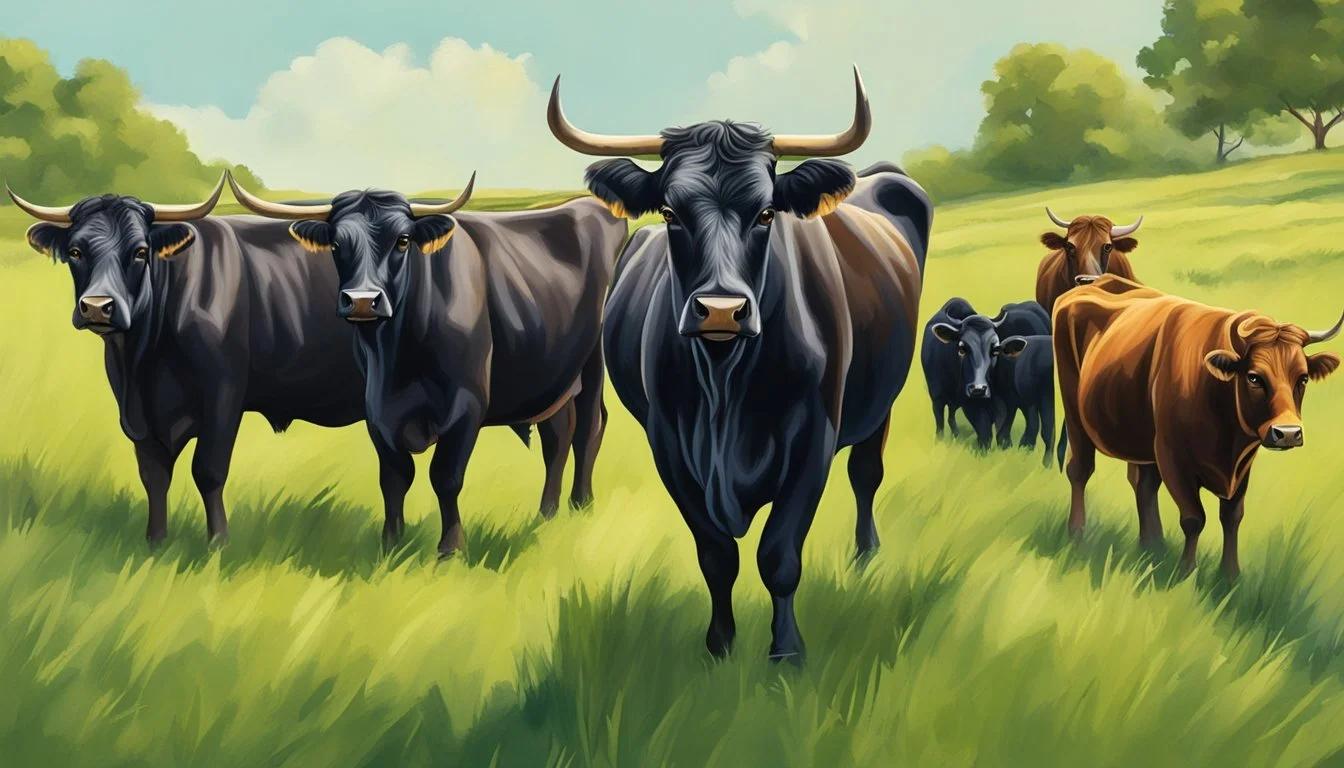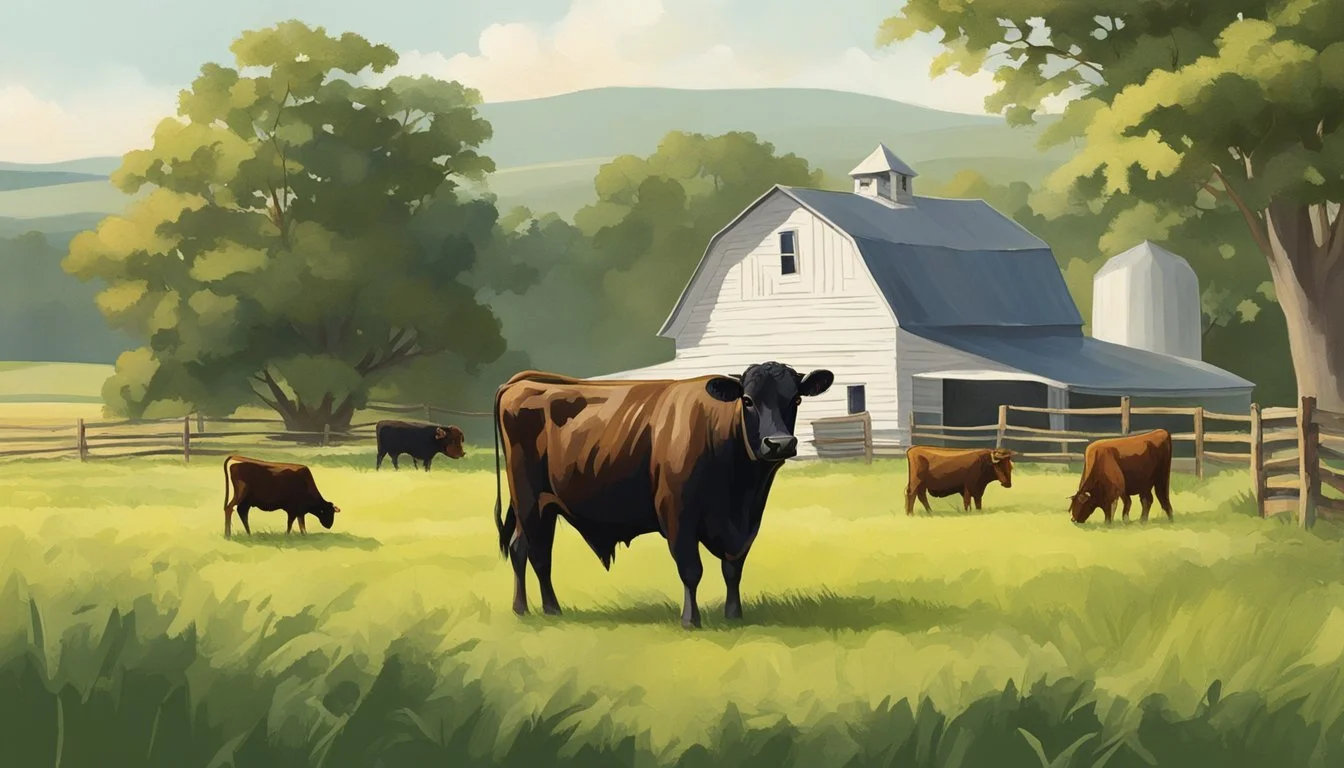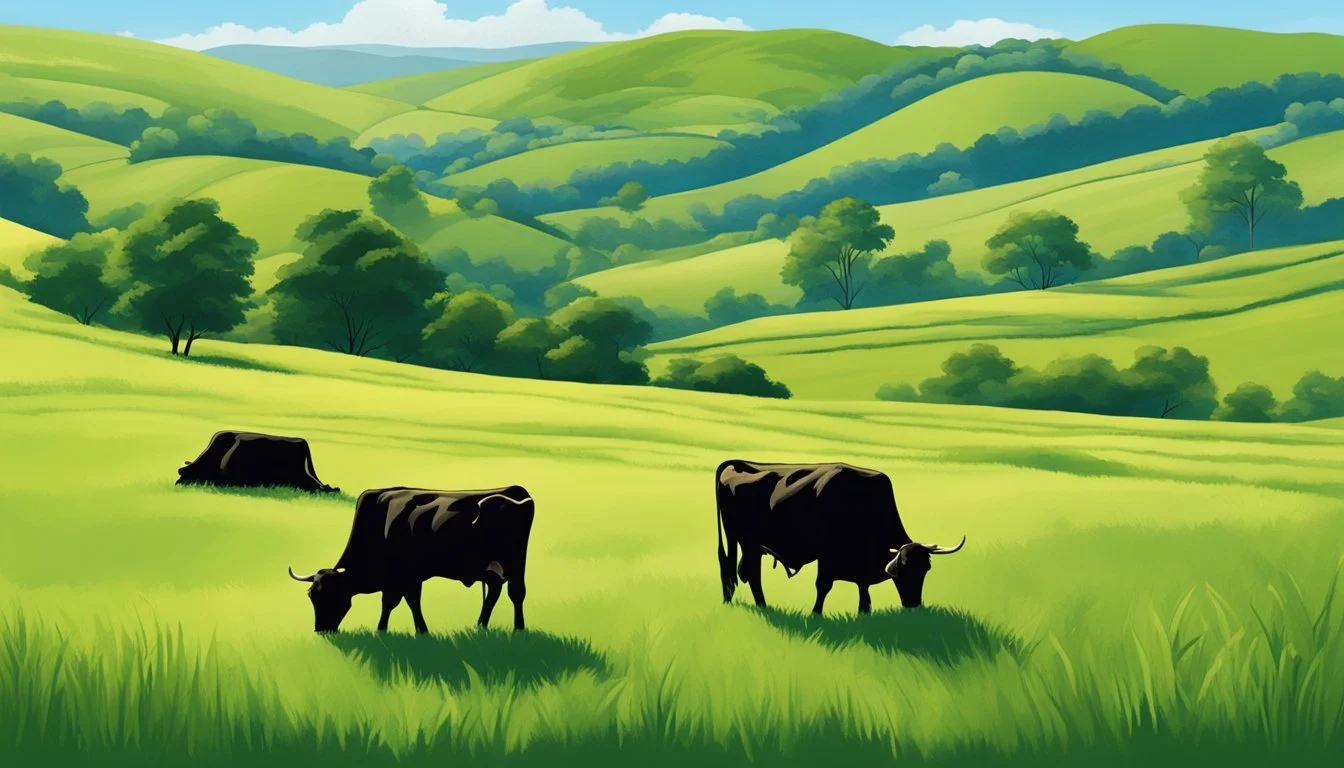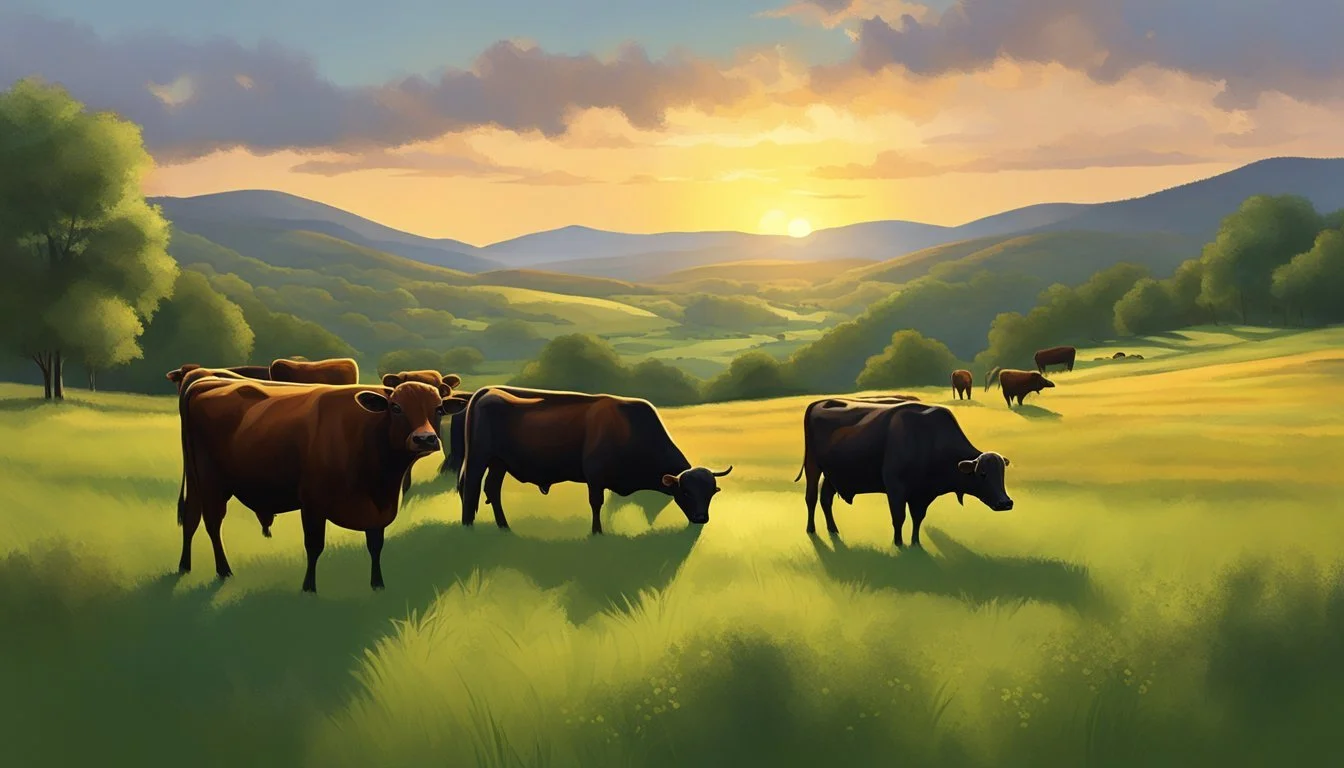The History and Origins of Dexter Cattle
Tracing the Breed's Ancestry
Dexter cattle are a distinguished breed of small-sized cattle that trace their origins to the southwestern part of Ireland, particularly County Kerry, with the breed dating back to the 18th century. They are believed to be named after a man named Dexter, an estate agent for Lord Hawarden on Valentia Island, which contributed to their nomenclature. Though once considered a variant within the Kerry breed, Dexters have since been recognized for their distinct qualities.
The breed's official promotion began in earnest with the establishment of the Dexter Cattle Society in the UK, following a split from the Kerry breed focus in the early 20th century, which marked a significant milestone in the breed’s history. This society aimed to enhance the breed's characteristics and maintain its purity, culminating in the detailed recording of thousands of Dexter cattle within their herd books by the 1920s.
In the United States, efforts to conserve and promote Dexters have led to the formation of dedicated associations, such as the American Kerry and Dexter Club which eventually became known as the American Dexter Cattle Association. This organization plays a crucial role in the preservation and advancement of Dexter cattle in the US, countering a period when the breed approached the brink of extinction in the mid-1970s. The persisting dedication to Dexter cattle has allowed the breed to gain a foothold again in American agriculture by emphasizing their utility and sustainable attributes in farming operations.
The Evolution of Dexter Cattle
Dexter cattle boast a storied history, stretching from their Irish origins to their recognition as a distinct breed with established standards. This journey reveals the breed's adaptability and the pivotal role of various societies in preserving its lineage.
Irish Roots and Kerry Influences
The Dexter breed traces its lineage to southwestern Ireland, specifically to County Kerry and surrounding regions, during the 18th century. It's a derivative of the indigenous Kerry cattle, which were known for their hardiness. Dexter cattle were initially developed by smallholders who required a versatile breed for both dairy and meat production. They are distinguished by their smaller stature, a trait favored for efficient farming in limited spaces.
Global Expansion and American Integration
With the onset of the 20th century, Dexter cattle began to spread beyond Irish borders, most notably to the United States. American breed enthusiasts first formed the American Kerry and Dexter Club in the 1940s to further the breed. By the mid-20th century, the American Dexter Cattle Association (ADCA) emerged as the breed’s official organization following its inception in 1957, signaling a renewed commitment to the breed just as it faced dwindling numbers within the United States. Efforts in the 1950s to import more British Dexters helped counter the threat of extinction in the U.S., cementing the breed's presence in America.
Breed Registration and Recognized Standards
In 1892, the first formal documentation began with the establishment of an English herd book, securing the Dexter breed's recorded heritage. The herd book's 27th volume in 1926 detailed that 986 bulls and 3,896 cows had been registered since its inception. The original society responsible for this changed its name to the Dexter Cattle Society and revised its purpose solely to the promotion of Dexter cattle. A standardized breed description soon followed, which included traits like size—small with well-rounded hindquarters—and color—primarily black, but also dun and red variations. This documentation was crucial in establishing consistency and ensuring the breed's preservation for future generations.
Defining Characteristics of Dexter Cattle
Dexter cattle are renowned for their compact size, distinct color variations, reliable breeding patterns, and pleasant behavior, making them a breed of interest for both small-scale and larger farming operations.
Physical Traits and Color Variations
Dexter cattle exhibit solid colors primarily in black, dun, and red. Rarely, they may have white markings. Physically, they are the smallest of the European cattle breeds, recognized for their hardiness and adaptability. The Dexter breed is often categorized by leg length, being either short-legged or non-short. Physical attributes include:
Size: Mature cows weigh between 750-850 pounds, while bulls weigh in at 1000-1100 pounds.
Horns: They are naturally horned, but a polled (naturally hornless) gene also occurs.
Body: Characteristically broad with rounded hindquarters.
Genetic Composition and Breeding Patterns
Dexter cattle carry unique genetic markers that have been selectively bred over time to optimize certain traits. Breeding practices have introduced a polled gene, allowing for naturally hornless cattle. Specific genetic patterns of the breed include:
DNA: Closely managed genetic lines to maintain breed standards.
Breeding: Preference for dual-purpose (milk and meat production) characteristics.
Behavioral Temperament and Personality
The breed typically displays a gentle temperament and personality, which makes them suitable for various management systems and a favorite among individual owners. Their behavior traits include:
Temperament: Known for being docile and gentle, making them manageable for hobbyists.
Personality: Generally an even-tempered breed with sociable dispositions.
Culinary and Agricultural Influence
Dexter cattle have carved a niche in the culinary world and agriculture with their quality meat and milk, and adaptability to sustainable farming practices, especially on small holdings.
Meat Quality and Dexter Beef Market
Dexter beef is recognized for its flavorful and tender quality. This breed is a dual-purpose breed, which means it provides both dairy and meat products. The meat of Dexter cattle is characterized by its lean nature and good marbling, which are sought-after traits by the consumer market. Due to their small size, Dexters produce a more manageable quantity of beef which is favorable for small scale producers and direct marketing channels.
Dexter Cattle in Dairy Production
In terms of dairy, Dexter cattle are efficient milk producers, particularly noted for their milk's high butterfat content, ranging from 4% to 5%, which is ideal for cheese and butter production. Despite their small size, a Dexter cow can produce about 1½-2½ gallons of milk per day. This yield and quality of milk make Dexter cattle a favorable choice for small dairy farms and homesteaders looking to diversify.
Role in Sustainable Farming and Small Holdings
Dexter cattle prove to be an excellent option for sustainable farming practices due to their versatility and efficient grazing habits. Their ability to thrive on less pasture, combined with their gentle temperament, makes them a practical breed for small farms and homesteaders. The breed's size and management ease allow for less environmental impact and encourage biodiversity on the farm. The many benefits of Dexter cattle support a sustainable, self-sufficient approach to farming.
Conservation and Herd Management
Dexter cattle, a heritage breed, require strategic conservation efforts to maintain their populations and genetic diversity. Herd management encompasses selective breeding, health care, and the roles of various organizations in promoting and supporting these compact cattle.
Building and Maintaining Dexter Herds
In building and maintaining Dexter herds, resource allocation plays a pivotal role. Associations provide support to breeders for the management of herd genetics and reproduction to ensure the vitality and diversity of the breed. Detailed records must be kept to track lineage and characteristics of individual cattle within each herd.
Herd Records: Keeping comprehensive documentation of pedigree, breeding outcomes, and herd growth.
Reproduction Strategies: Implementing selective breeding programs to maintain breed standards and genetic health.
Health, Care, and Welfare Practices
Prioritizing Dexter cattle care is essential for the longevity and robustness of the breed. Routine health checks and maintenance schedules ensure the welfare of each animal. Breeders must also follow:
Regular Health Assessments: Including vaccination, parasite control, and disease prevention.
Nutrition and Habitat: Providing a balanced diet and appropriate shelter that cater to the size and needs of Dexter cattle.
Organizations Promoting Dexter Cattle
A number of associations, such as the American Dexter Cattle Association (ADCA) and the Dexter Cattle Society, actively work in promoting the breed. These entities offer membership to breeders and provide a wealth of resources, including:
Educational Materials: Guides on best practices for Dexter cattle care and breeding.
Registry Services: Maintaining herd books and registering purebred Dexter cattle to track and preserve the breed's lineage.
Sociocultural Impact and Legacy
Dexter cattle have left an indelible mark on agricultural history and culture, with their origins tracing back to Ireland and their propagation influenced by notable figures such as Lord Hawarden.
Historical Significance and Notable Figures
The Dexter breed, originating in Ireland during the 18th century, has played a significant role in the agricultural landscape. One figure associated with the breed is Lord Hawarden who is believed to have employed a Mr. Dexter on his estate on Valentia Island, giving the cows their name. The Dexter Cattle Society, established in England, further formalized the breed's standards and history. Scottish agriculturist David Low, in his works, highlighted the breed's efficiency at a time when the scientific study of agriculture was becoming more prominent, adding to their historical significance in the context of livestock development.
Dexter Cattle in Shows and Exhibitions
Shows and Exhibitions:
Royal Dublin Society: Established exhibitions showcasing livestock including Dexter cattle.
Recognition: Dexter cattle have gained accolades for their hardiness and compact size in various shows.
The exhibition of Dexter cattle at shows such as those organized by the Royal Dublin Society provided a platform for breeders to share best practices and improved the breed's visibility. These events helped facilitate a surge of interest in the breed, both in their country of origin and internationally.
Cultural Depictions and References
Dexter cattle have been referenced in various forms of literature, serving as symbols of idyllic pastoral life and agricultural heritage. Their depiction has been influenced by their history and origins, representing the traditional landscapes of Ireland and England. As the smallest European cattle breed, they are often cited for their unique size and efficient productivity in both meat and milk, making them a common reference point in discussions about efficient animal husbandry practices.
Present and Future Trajectories
In the dynamic world of cattle farming, Dexter cattle remain a prominent breed known for its unique attributes and versatility. Within the context of modern breeding practices and genetic research, the breed faces new challenges and opportunities. The American Dexter Cattle Association plays a pivotal role in guiding these future trends on a global scale.
Current Trends in Dexter Cattle Breeding
American Dexter Cattle Association statistics indicate a growing interest in Dexter cattle breeding. Breeders focus on traits such as size and meat quality to cater to market demands. Weight remains a critical metric, with the ideal Dexter bull weighing between 1,000 to 1,200 pounds and cows averaging 750 to 850 pounds.
Selection for manageable size for small-scale operations
Emphasis on genetic diversity to maintain breed robustness
Challenges and Opportunities in Dexter Farming
Dexter cattle farmers navigate a landscape filled with both challenges and opportunities:
Challenges:
Market competition with larger cattle breeds
Balancing traditional practices with modern efficiency
Opportunities:
Niche markets valuing sustainable and organic farming practices
Utilization of Dexter cattle for conservation grazing efforts
The distribution of Dexter cattle world-wide aids in their viability as a breed, increasing their genetic pool and marketability.
Advancement and Innovation in Dexter Genetics
Genetic research within the Dexter breed is advancing, laying the groundwork for future development. DNA sequencing allows for the identification of favorable genes, guiding breeding decisions and enhancing the breed's characteristics.
Gene mapping to improve health and disease resistance
Breeding programs leveraging DNA data for improved productivity
Distribution of genetic material across borders fosters a global network of Dexter genetics, potentially leading to diversified and resilient cattle herds. The future trends in Dexter cattle breeding will likely be shaped by these ongoing advancements in research and the continuing support of organizations like the American Dexter Cattle Association.








